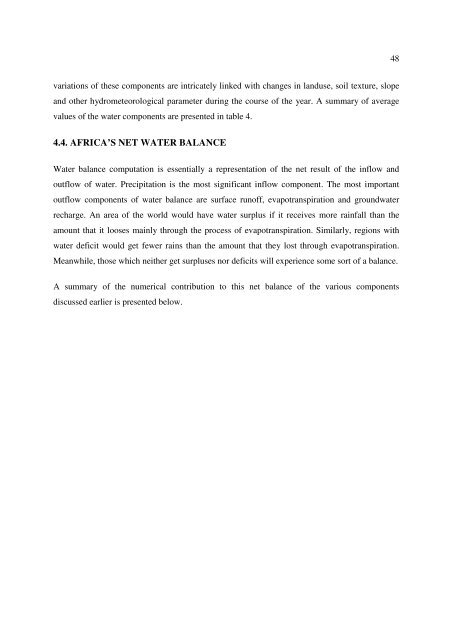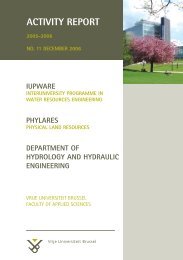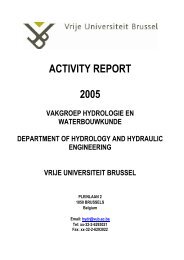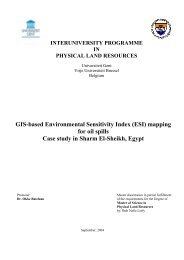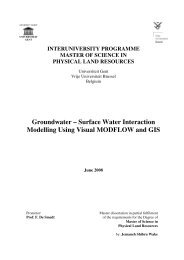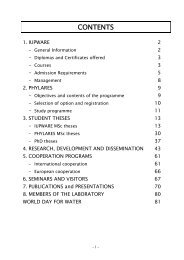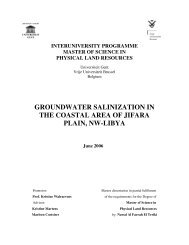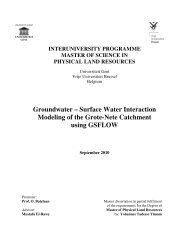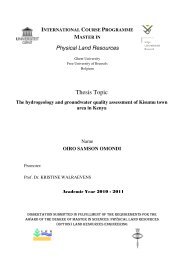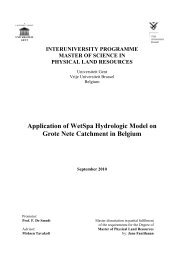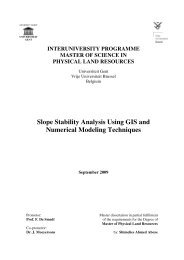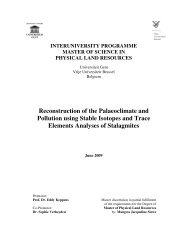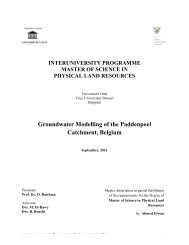A GIS Based Water Balance Study of Africa - Physical Land Resources
A GIS Based Water Balance Study of Africa - Physical Land Resources
A GIS Based Water Balance Study of Africa - Physical Land Resources
You also want an ePaper? Increase the reach of your titles
YUMPU automatically turns print PDFs into web optimized ePapers that Google loves.
48variations <strong>of</strong> these components are intricately linked with changes in landuse, soil texture, slopeand other hydrometeorological parameter during the course <strong>of</strong> the year. A summary <strong>of</strong> averagevalues <strong>of</strong> the water components are presented in table 4.4.4. AFRICA’S NET WATER BALANCE<strong>Water</strong> balance computation is essentially a representation <strong>of</strong> the net result <strong>of</strong> the inflow andoutflow <strong>of</strong> water. Precipitation is the most significant inflow component. The most importantoutflow components <strong>of</strong> water balance are surface run<strong>of</strong>f, evapotranspiration and groundwaterrecharge. An area <strong>of</strong> the world would have water surplus if it receives more rainfall than theamount that it looses mainly through the process <strong>of</strong> evapotranspiration. Similarly, regions withwater deficit would get fewer rains than the amount that they lost through evapotranspiration.Meanwhile, those which neither get surpluses nor deficits will experience some sort <strong>of</strong> a balance.A summary <strong>of</strong> the numerical contribution to this net balance <strong>of</strong> the various componentsdiscussed earlier is presented below.


